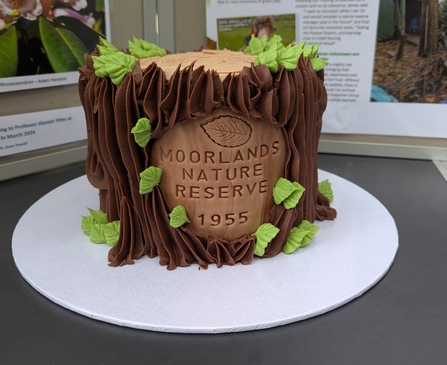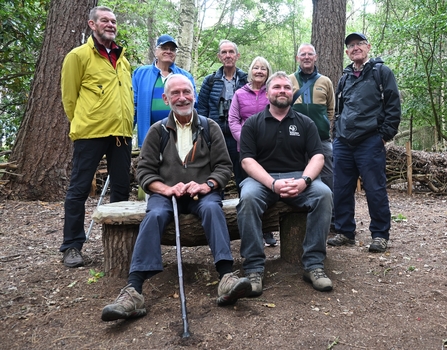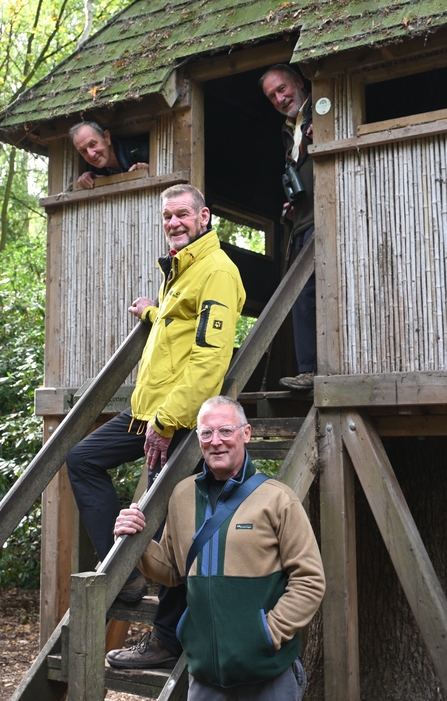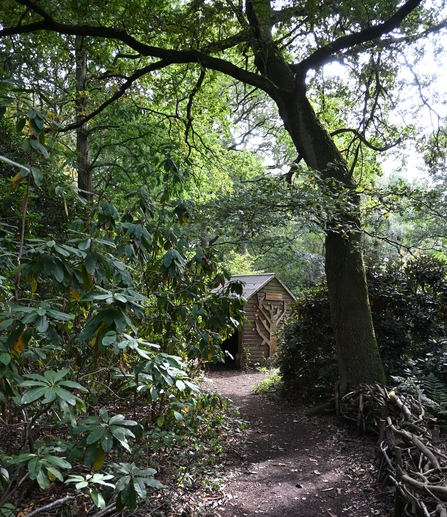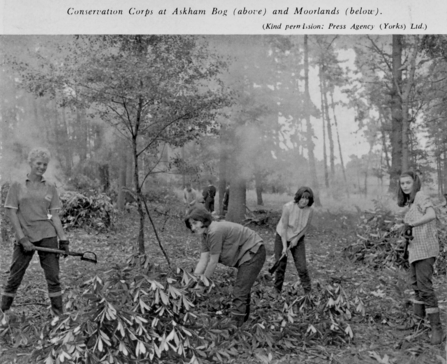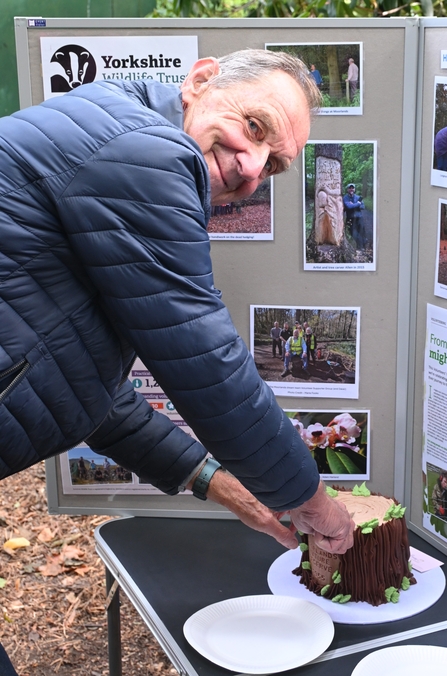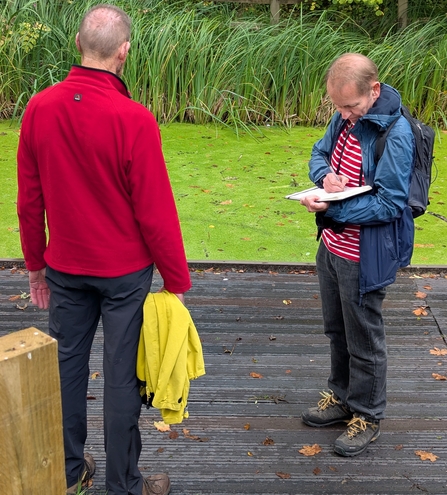First impressions
At first glance the Moorlands nature reserve looks like a typical small Yorkshire woodland. Situated near Wiggington, just outside York and accessed through a wooden gate, it’s a welcoming green wood. But as you start to explore the wide flat paths, you realise it’s a little different. Some of the trees are taller, there are little fences everywhere and much of the undergrowth is twisted in strange shapes. It has a mysterious but gentle quality to it.
Anniversary
Less mysterious is the small group who met on a fine September Saturday to celebrate the 70th anniversary of this unique place. Six members of the current volunteer team - The Moorlands Supporter group -were joined by a number of YWT staff, trustees and even the President himself, Professor Sir John Lawton. The celebrations themselves were low key and informal, involving a walk round the reserve to see the impact of the volunteers work and look at the challenges for the future. Cake was also involved - of course!


